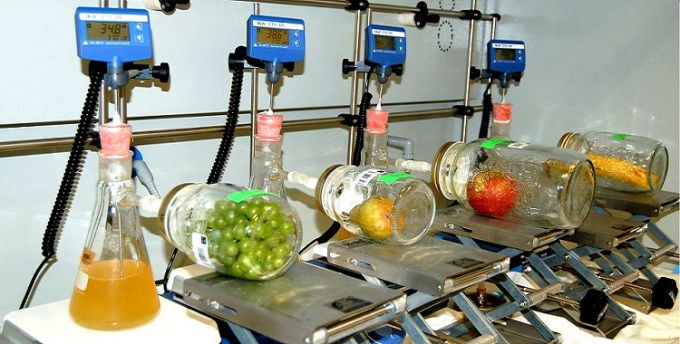Ken research announced recent publication on, "Hydropower in Australia, Market Outlook to 2030, Update 2016-Capacity, Generation, Levelized Cost of Energy (LCOE), Investment Trends, Regulations and Company Profiles”, the industry analysis specialists that offer comprehensive information and understanding of the hydropower market in Australia. The report provides in depth analysis on global renewable power market and global hydropower market with forecasts up to 2030. The report analyses the power market scenario in Australia (includes conventional thermal, nuclear, large hydro and renewable energy sources) and provides comprehensive viewpoint. The research details renewable power market outlook in the country (includes hydro, small hydro, biopower and solar PV). The report highlights installed capacity and power generation trends from 2006 to 2030, time. A detailed coverage of renewable energy policy framework governing the market with specific policies pertaining to hydropower is provided in the report. The research also provides company snapshots of some of the major market participants.

The report is built using data and information sourced from proprietary databases, secondary research and in-house analysis of industry experts. A brief introduction on global carbon emissions and global primary energy consumption is given. Detailed overview of the global hydropower market with installed capacity and generation trends, installed capacity split by major hydropower countries in 2015 and key owners' information of various regions is provided. An overview on global renewable power market, highlighting installed capacity trends, generation trends and installed capacity split by various renewable power sources and the information is covered for the historical period 2006-2015 and forecast period 2015-2030. Position yourself to gain the maximum advantage of the industry's growth potential. It can be used to develop strategies based on the latest regulatory events and to identify key partners and business development avenues. It’s the key solution to understand and respond to your competitors' business structure, strategy and prospects.
Hydro uses flowing water to spin a turbine connected to a generator that produces electricity. The amount of electricity generated depends on the volume of water and the height of the water above the turbine. Hydropower is the most advanced and mature renewable energy technology and provides some level of electricity generation in more than 160 countries worldwide. Hydro is a renewable energy source and has the advantages of low greenhouse gas emissions, low operating costs, and a high ramp rate (quick response to electricity demand), enabling it to be used for either base or peak load electricity generation, or both.
Loy Yang in Victoria is the largest Power Station in Australia by capacity. Large hydroelectric power stations need dams to store the water required to produce electricity. These dams are often built to hold irrigation or drinking water, and the power station is included in the project to ensure maximum value is extracted from the water. Renewable power sources include wind (both onshore and offshore), solar photovoltaic (PV), concentrated solar power (CSP), small hydropower (SHP), biomass, biogas and geothermal. Hydropower currently accounts for about 40 per cent of the renewable electricity produced in Australia. Tasmania's hydroelectric plants and the Snowy River Hydro Scheme in New South Wales generate the majority of this energy.
Australia is the driest inhabited continent on earth, with over 80 per cent of its landmass receiving an annual average rainfall of less than 600 mm per year and 50 per cent less than 300 mm per year. There is also high variability in rainfall, evaporation rates and temperatures between years, resulting in Australia having very limited and variable surface water resources. Much of Australia's economically feasible hydro energy resource has already been harnessed. The amount of hydro power generated in 2015 was lower than 2014 due to low rainfall in key hydro catchments. Hydro Tasmania’s network endured the driest period on record between September and November, and storages dropped to a quarter of capacity (25.7 per cent). The majority of Australia's suitable hydro sites have already been developed, so the sector's opportunity for growth is limited. In coming years, most of the activity in the sector will be in developing mini hydro power plants or upgrading and refurbishing existing power stations
Australia has more than 100 operating hydroelectric power stations with total installed capacity of about 7800 megawatts (MW). These are located in the areas of highest rainfall and elevation and are mostly in New South Wales (55 per cent) and Tasmania (29 per cent). The Snowy Mountains Hydro-electric Scheme, with a capacity of 3800MW, is Australia's largest hydro scheme and is one of the most complex integrated water and hydroelectricity schemes in the world. The Scheme collects and stores the water that would normally flow east to the coast and diverts it through trans-mountain tunnels and power stations. The water is then released into the Murray and Murrumbidgee Rivers for irrigation. The Snowy Mountains Scheme comprises sixteen major dams, seven power stations (two of which are underground), a pumping station, 145km of inter-connected trans-mountain tunnels and 80km of aqueducts. The Snowy Mountains Hydro-electric Scheme accounts for around half of Australia's total hydroelectricity generation capacity and provides base load and peak load power to the eastern mainland grid of Australia.
Hydro energy is particularly important in Tasmania where it provides much of the state's electricity. The Tasmanian integrated hydropower scheme harnesses hydro energy from six major water catchments and involves 50 major dams, numerous lakes and 29 power stations with a total capacity of over 2600MW. The scheme provides base and peak load power to the National Electricity Market, firstly to Tasmania and then to the Australian network through Basslink, the undersea interconnector which runs under Bass Strait. There are also hydroelectricity schemes in north-east Victoria, Queensland, Western Australia, and a mini-hydroelectricity project in South Australia.
The levelised cost of electricity (LCOE) is a measure of a power source which attempts to compare different methods of electricity generation on a consistent basis. It is an economic assessment of the average total cost to build and operate a power-generating asset over its lifetime divided by the total energy output of the asset over that lifetime. Shrinking rivers have already reduced or even shut down power generation in existing dams when their reservoirs dropped below critical levels. As a result, drought-stricken countries like Kenya, the Philippines, and Venezuela have suffered periodic blackouts and electricity rationing in recent years. The Australian hydro power industry has already attracted over one billion dollars of investment to further develop Australian hydro power projects. Opportunities for further growth in the hydro power industry are principally in developing mini hydro plants or refurbishing, upgrading and modernising Australia’s current fleet
Companies Covered
Snowy Hydro Limited, Origin Energy Limited, CS Energy Ltd, AGL Energy Limited
Key Factors Considered in the Report
Australia Hydropower Market
Hydropower Market Future Outlook Australia
Hydropower Generation Capacity Australia
Australia Energy Consumption
Global Renewable Power Installations
Thermal Power Market Australia
Global Carbon Emission
Australia Hydropower Market Investment Trends
Australia Renewable Energy Regulations
Australia Renewable Energy Installed Capacity
For more coverage click on the link below:
Related links:
Contact Us:
Ken Research
Ankur Gupta, Head Marketing & Communications
Ankur@kenresearch.com
+91-9015378249
Ken Research
Ankur Gupta, Head Marketing & Communications
Ankur@kenresearch.com
+91-9015378249







